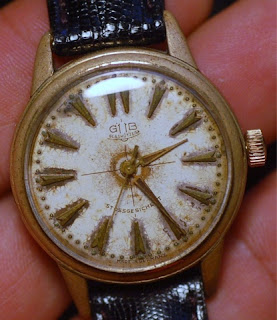Please Visit Rolex.2itb.com http://www.horsyland.com https://photographic-experience.blogspot.hk/
Monday, February 29, 2016
Sunday, February 28, 2016
IWC mark XI
The IWC mark XI
Friday, February 26, 2016
The Spaceman watch
The Spaceman was unlike anything seen before and Catena introduced the fleet at the Basel Fair of 1972. The large oval case appeared to be docked on your wrist held by a triple-forked Corfam strap by DuPont. The case also had a coned dome crystal half concealed by a coloured metal visor that allowed viewing of the dial to only the wearer. All hands and markers were perfectly seventies orange with models in a variety of colours only possible during that special decade.
The watches were powered by automatic and manual winding mechanical ETA movements and were distributed by a variety brands, among them Jules Jurgensen, Fortis, Tressa and Zeno, Omax
Tuesday, February 23, 2016
Seiko 6602-9981
Sunday, February 14, 2016
Monday, February 08, 2016
Saturday, February 06, 2016
Gub cal 28.1
Thursday, February 04, 2016
Omega Chronograph ref 2451
Original stainless steel case is decidedly massive and sporty for the 1950s. Dimensions are 35mm diameter by 13.8mm thick. Massive screw back. Highly domed acrylic crystal. Round pump-style chronograph pushers and large winding crown. Case appears to be never polished and to have its original sharp edges, corners and bevels.
Original untouched dial started out as silver but has developed a champagne patina to very nice effect. Applied '12', Omega logo and hour markers. Sunken subdials with concentric guilloche. Tachymetre scale at the dial's periphery. Original hands.
GUB
 A Lange VEB wristwatch with Caliber 28 (it should be noted this dial has been refinished)From 1948-1951, Lange VEB produced only 5,067 watches with with the caliber 28 movement inside. The 28 features a subsidiary seconds register. Original Lange VEB watches with Lange signed movements are increasingly difficult to find, especially outside of Germany.
A Lange VEB wristwatch with Caliber 28 (it should be noted this dial has been refinished)From 1948-1951, Lange VEB produced only 5,067 watches with with the caliber 28 movement inside. The 28 features a subsidiary seconds register. Original Lange VEB watches with Lange signed movements are increasingly difficult to find, especially outside of Germany.GUB Cal. 60 (1952-58): 280,410 pcs.
GUB cal. 62 (1951-58): ca. 191,900 pcs.
GUB cal. 63 (1953-59): ca. 361,149 pcs.
GUB cal. 67.1 (1960-67): 190,360 pcs.
GUB cal. 69.1 (1960-71): 411,750 pcs.
GUB cal. 70.1 (1960-71): 388,820 pcs
GUB cal. 74 "Spezimatik" (1964-80) 1.857,966 pcs.
GUB cal. 75 (1964-80): 1.858,466 pcs.
GUB cal. 77 (1959-70): ca. 181,101 pcs.
GUB cal. 11-26 "Spezichron" (1978-85): ca. 290,880 pcs.
Problem with signing in
I am facing issues with saving my blog with photos and I cannot seemed to log on using my ipad. Perhaps, the days have pme to end the blog....
-
2019 is going to be a good year as I have managed to find a nice 42mm Droz super compressor from Stockholm Sweden. Droz R.A.N. (Royal Austra...
-
淺談大mm由來 大mm乃坊間對精工潛水錶形號SBDX001的別稱,緣於錶面上印有MARINEMASTER字様, 乃精工首枚潛水錶被冠以MARINEMASTER之名,之後的新一代吞拿也相繼加上同樣的字在錶面上. 大mm 原祖乃形號6215,要追索到1967年。精工首枚潛水錶,擁有...
-
I am facing issues with saving my blog with photos and I cannot seemed to log on using my ipad. Perhaps, the days have pme to end the blog....






























